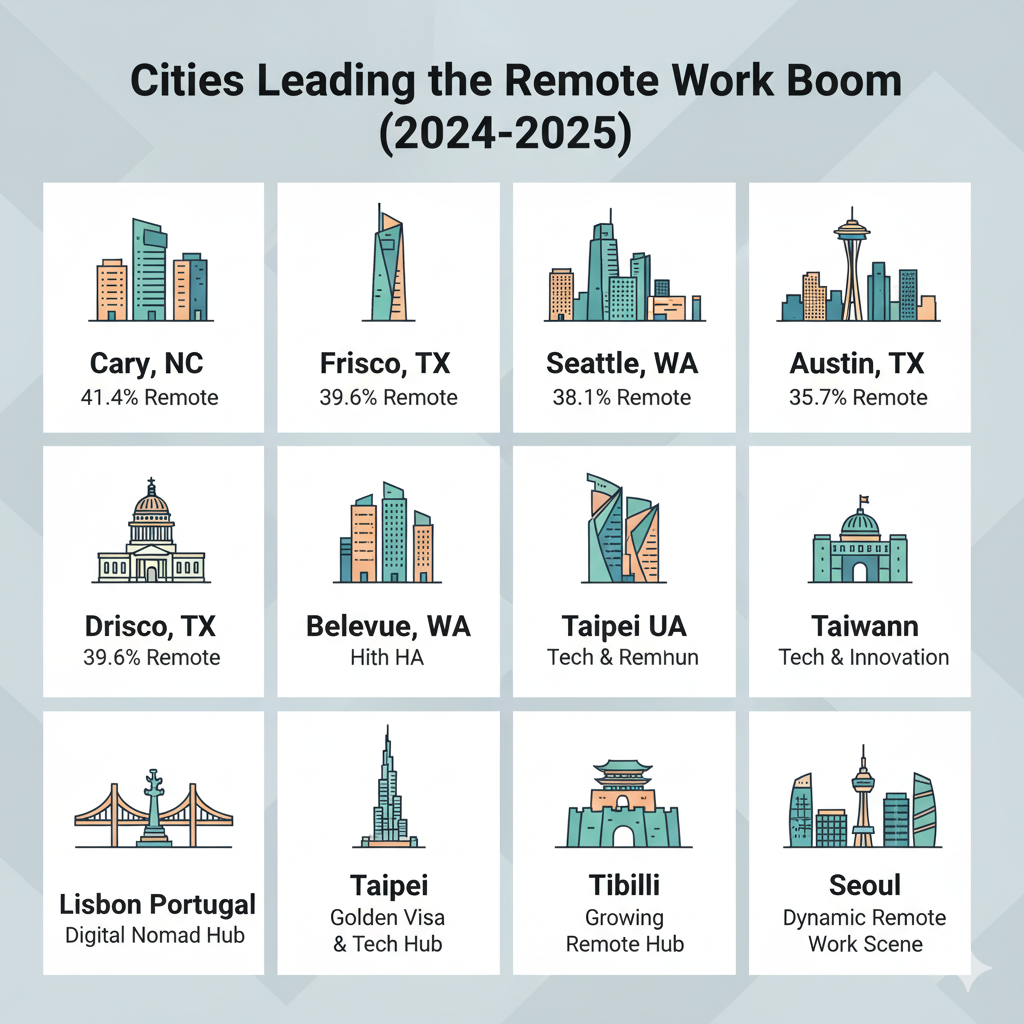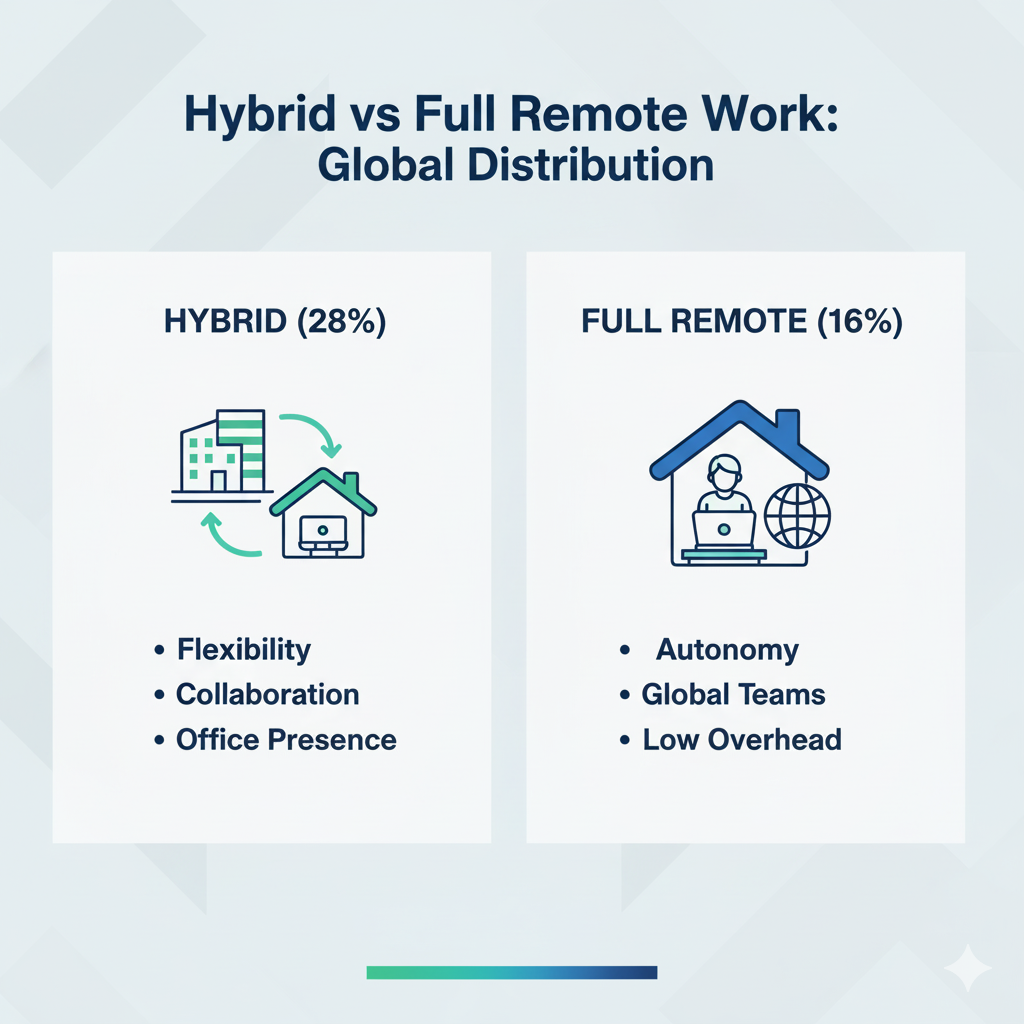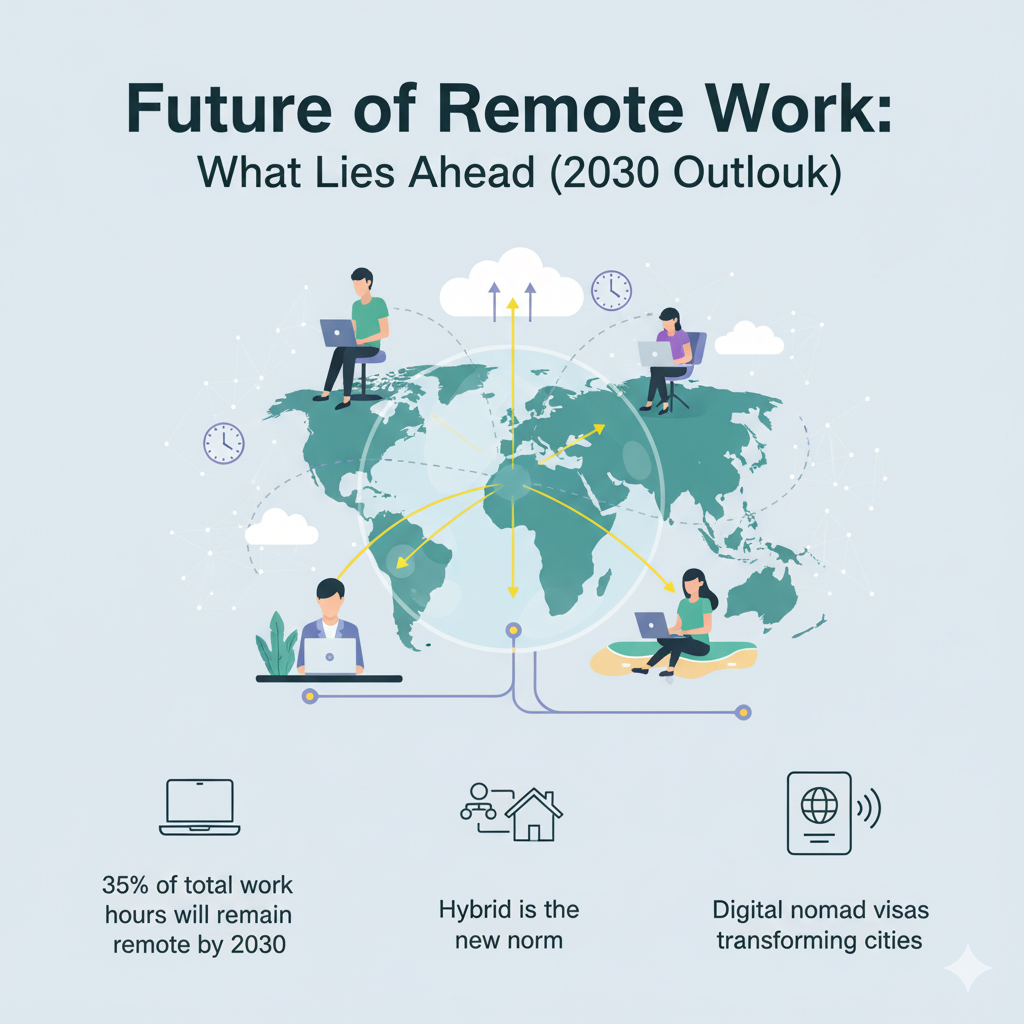The world of work has been transformed. Since the pandemic, the share of people working remotely has more than doubled — and in many advanced economies, it continues to rise. In 2024, Eurostat reported that over 51.9% of employees in the Netherlands worked remotely in some capacity, making it the most telework-friendly country in Europe. Similar growth patterns have emerged across Scandinavia, parts of North America, and select Asian hubs.
Remote work adoption refers to the proportion of the workforce engaged in full remote, hybrid, or occasional work-from-home (WFH) arrangements. While some companies have pulled workers back to offices, the overall trend shows a long-term shift toward flexibility — especially in knowledge-based sectors.
This article explores which countries and cities lead remote work adoption, what factors are driving the trend, and what it means for the future of global employment.

According to data from Eurostat (2024) and the Global Remote Work Index (NordLayer, 2024), European nations dominate the global leaderboard.
Top countries for remote work adoption (% of workforce):
These nations share common strengths and robust digital infrastructure, progressive labor policies, and high-quality internet penetration. Nordic countries in particular benefit from strong worker protections, trust-based management, and advanced digital literacy.
Beyond Europe, Canada and the United States maintain large, flexible workforces, especially in tech, finance, and creative industries.
Emerging economies are catching up. The Philippines, Malaysia, India, and Brazil have seen rapid adoption driven by IT outsourcing, start-up ecosystems, and digital service exports. For instance, Invezz (2024) reported a 38% increase in remote job postings in India year-over-year.

While countries set the tone, cities and metropolitan regions are the real battlegrounds of remote work adoption.
In the United States, SmartAsset’s 2024 analysis of Census Bureau data identified the metros with the highest percentage of remote workers:
These hubs combine tech industry density, high broadband penetration, and affordable suburban living.
Globally, digital nomad and remote work hubs are also rising fast:
According to Nomads.com (2024), these cities saw remote worker inflows rise by 30–50% since 2021, solidifying their place as global remote work capitals.

Remote work today exists on a spectrum.
According to the World Economic Forum (2024), about 28% of global employees work in hybrid arrangements, while 16% are fully remote. The remainder are mostly on-site.
In countries like Sweden and Finland, hybrid work dominates due to flexible employment policies. Meanwhile, the U.S. and Canada show a growing share of full-remote positions — particularly in tech and creative industries.
In Asia, hybrid setups are gaining traction faster than full-remote due to cultural preferences for in-person collaboration. Japanese and Korean firms, for instance, have increased hybrid flexibility but still value physical presence.
Persistence outlook: McKinsey’s 2024 Future of Work Survey predicts remote work will stabilize at around 35% of total work time globally — more than double pre-pandemic levels.


Europe remains the world leader in remote work. Northern countries: Netherlands, Sweden, and Finland exhibit the highest rates, exceeding 40%.
Southern and Eastern Europe show lower adoption (e.g. Italy and Poland below 25%), but are catching up thanks to EU digital initiatives and remote job exports.
The U.S. and Canada maintain strong hybrid ecosystems. American cities like Seattle, Austin, and Washington D.C. are remote work hotspots, while Canada’s Toronto and Vancouver rank high due to progressive work policies.
Asia’s adoption varies widely.
The UAE and Saudi Arabia are promoting remote work to diversify economies. Dubai’s “Virtual Working Program” allows foreign professionals to live and work remotely for up to a year.
In Africa, South Africa is the top performer, supported by strong internet access and English proficiency.

For Employees: Remote work empowers professionals to choose where they live, reduce commuting stress, and achieve better work-life balance. It opens access to international jobs without relocation.
For Employers: Companies gain global reach for recruitment but must invest in remote collaboration tools, cybersecurity, and clear policy frameworks. Managing distributed teams effectively is now a competitive advantage.
For Cities & Governments: Urban centers face both opportunities and challenges. While downtown business districts may see reduced foot traffic, smaller cities and rural areas can attract talent migration. Real estate, transportation, and service industries will continue adapting to this spatial shift.
By 2030, hybrid and remote-friendly ecosystems are projected to define competitiveness — for both nations and cities.
Remote work is no longer a pandemic response — it is a defining feature of the modern labor landscape. Nations with robust infrastructure, flexible labor laws, and supportive cultures are thriving in this shift.
As we look toward 2025 and beyond, the line between where we live and where we work will continue to blur. For employers, success will hinge on building adaptable, inclusive systems. For workers, the future offers unprecedented freedom — to live, work, and connect globally.